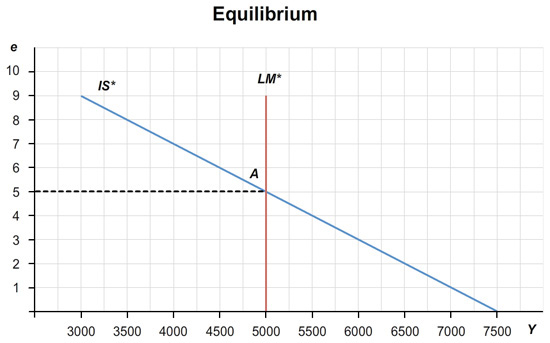Question 1 of 3
Step 1
A small open economy is described by the following equations:
C = 300 +.8 (Y – T)
I = 900 – 50 r
NX = 500 – 100 ε
M/P = Y – 125 r
G = 1000
T = 1000
M = 8000
P = 2
r* = 8
Based on the graph below, choose the correct equation for the IS* and LM* curves.
Calculate the equilibrium exchange rate, level of income, and net exports.
The equilibrium exchange rate, ε, = .
The equilibrium level of income, Y, = .
The equilibrium level of net exports, NX, = .
Step 2
A small open economy is described by the following equations:
C = 300 +.8 (Y – T)
I = 900 – 50 r
NX = 500 – 100 ε
M/P = Y – 125 r
G = 1000
T = 1000
M = 8000
P = 2
r* = 8
Assume a floating exchange rate. Calculate what happens to the exchange rate, the level of income, net exports, and the money supply if the government reduces its spending by 100.
The exchange rate, ε, declines to .
The level of income, Y, is unchanged at .
The level of net exports, NX, rises to .
Money supply, M, is unchanged at .



Step 3
A small open economy is described by the following equations:
C = 300 +.8 (Y – T)
I = 900 – 50 r
NX = 500 – 100 ε
M/P = Y – 125 r
G = 1000
T = 1000
M = 8000
P = 2
r* = 8.
Now assume a fixed exchange rate. Calculate what happens to the exchange rate, the level of income, net exports, and the money supply if the government reduces its spending by 100.
The exchange rate, ε, is unchanged at .
The level of income, Y, declines to .
The level of net exports, NX, is unchanged at .
Money supply, M, declines to .


